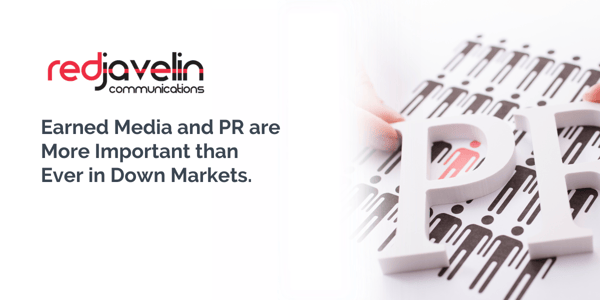 As B2B companies look at their overall marketing strategies, earned media and PR are more important than ever in down markets. While B2B marketing focuses on promoting products or services to other businesses, PR focuses on building and maintaining the company's reputation and relationships with various stakeholders, including customers, employees, investors, and the media.
As B2B companies look at their overall marketing strategies, earned media and PR are more important than ever in down markets. While B2B marketing focuses on promoting products or services to other businesses, PR focuses on building and maintaining the company's reputation and relationships with various stakeholders, including customers, employees, investors, and the media.
B2B marketing and PR are synergistic and work together to achieve common goals, such as increasing brand awareness, building credibility, and generating leads. For example, a company might use PR to secure media coverage and thought leadership opportunities. In contrast, B2B marketing uses that content for content marketing and email campaigns to reach and engage target audiences.
B2B buyers turn to earned media over brand-generated content because it is seen as more trustworthy, provides valuable insights, and focuses more on education than promotion which is critical in down markets.
- More Trustworthy: Earned media is perceived as being more trustworthy and credible than brand-generated content. This is because earned media is created by independent third-party sources, such as journalists, industry experts, or other thought leaders, who are seen as more objective and unbiased. B2B buyers are more likely to trust content that is not directly created by a company or its marketing team. According to a recent survey by Demand Gen Report, 97% of B2B buyers said that they consider content from industry influencers and third-party experts to be more credible and trustworthy than content created by the brand itself.
- Deeper Insights: Earned media often provides more valuable insights and information. Third-party experts and industry influencers who contribute to earned media are often able to provide deeper, more nuanced perspectives on industry trends, challenges, and opportunities, than a brand's own marketing team.
- Educational Rather Than Promotional: B2B buyers are often looking for content that is educational and informative rather than overtly promotional. Earned media pieces tend to focus on providing insights and information rather than promoting a specific product or service. This makes earned media more attractive to B2B buyers who are looking for thought leadership and expert opinions.
A well-coordinated and integrated PR and marketing approach has many benefits:
- More Content for Marketing: Earned media can be used and repurposed for many marketing activities. It can be turned into a lead magnet in the form of an ebook, white paper, or infographics. Quotes can be used on your website. References can be made in a lead nurture email sequence. Coverage can be used to attract prospects to your trade show booth.
- Increased Reach: Traditional media outlets have a wider reach and can help a brand reach a larger audience which is important when you are focused on lead generation. Media relations can help a brand get coverage in multiple outlets, increasing reach.
- Cost-effective: Earned media placements can be more cost-effective than paid advertising, providing a higher return on investment.
- SEO: Earned media placements can also improve a brand's search engine optimization (SEO) by increasing the number of backlinks to their website from reputable sources. See our blog "7 Smart Ways to Get Quality SEP Backlinks from PR" on this topic.
- Thought Leadership: When a third-party, such as a reputable news outlet, features or quotes a thought leader, it can legitimize their ideas and expertise. This can help to build trust and establish the thought leader as an authority in their field. By positioning executives as thought leaders in their industry through PR efforts such as byline articles, interviews, and speaking engagements, B2B marketers can leverage this increased visibility to help establish credibility among a wider audience, attract new followers and generate leads among a wider audience.
- Crisis management: In the event of a crisis or negative publicity, PR can work with B2B marketers to develop a strategy for addressing the issue and mitigating its impact on the company's reputation and bottom line.




